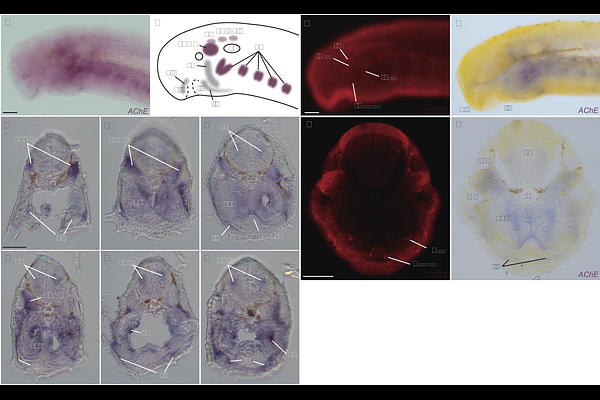Whole-mount acetylcholinesterase (AChE) staining reveals unique motor innervation of the lamprey oral region: with special reference to the evolutionary origin of the vertebrate jaw

Whole-mount acetylcholinesterase (AChE) staining reveals unique motor innervation of the lamprey oral region: with special reference to the evolutionary origin of the vertebrate jaw
Tamura, M.; Suzuki, D. G.
AbstractThe evolutionary change of the trigeminal nerve-innervation pattern is essential to reveal the mechanism underlying jaw acquisition. However, the homology of the branches between gnathostomes (jawed vertebrates) and cyclostomes (living jawless vertebrates) remains unclear. In this study, we focused on a sub-branch called the ramus subpharyngeus, which belongs to the second branch of the lamprey trigeminal nerve and projects to the lower lip, investigating whether it contains motor components. To visualize motor fibers, we performed acetylcholinesterase (AChE) staining, a histochemical method that visualizes intrinsic activities of the catabolic enzymes produced by motor neurons and muscle fibers. As a result, we found AChE staining signals that correspond to the innervation course of the ramus subpharyngeus. To confirm that the signals are not produced by the motoneuronal somata nor muscle fibers, we conducted gene expression analysis by in situ hybridization. The results support that the signals mark the motor fibers. Based on these results, we propose that the lamprey oral apparatus is chiefly controlled by the second (i.e., pre-mandibular) branch of the trigeminal nerve and further suggest that a drastic reorganization of the anterior craniofacial region occurred during the acquisition of the vertebrate jaw.